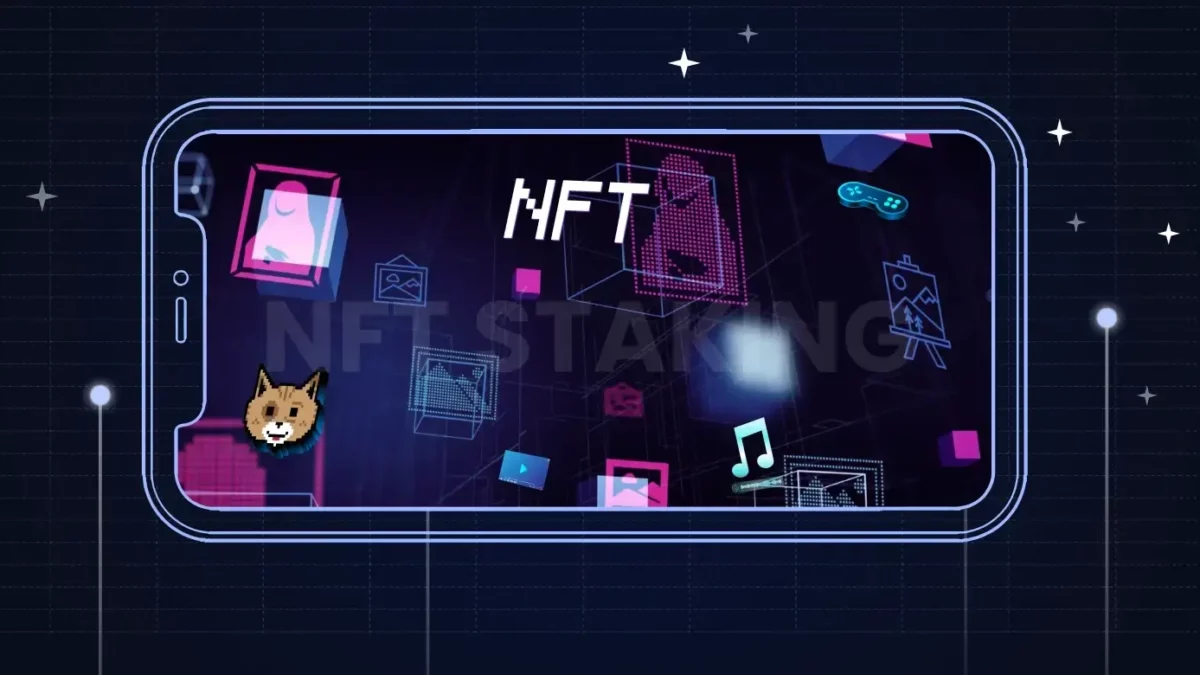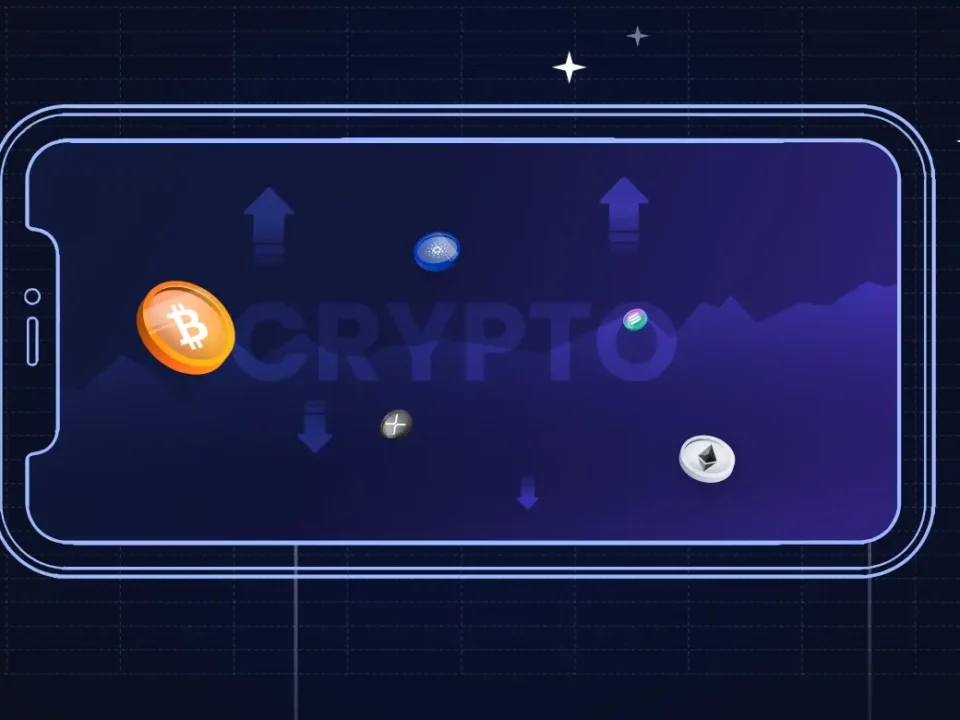Table of Contents
ToggleIntroduction
In the ever-evolving landscape of crypto and blockchain technology, Non-Fungible Tokens (NFTs) have emerged as a groundbreaking innovation. They represent unique digital assets, from digital art to virtual real estate, and they have gained immense popularity in recent years. As NFTs continue to make headlines, a new concept called “staking” has entered the scene, allowing NFT holders to not only own these unique digital items but also earn rewards by participating in the staking process.
In this article, we will delve into the world of NFT staking, exploring what it is, how it works, its advantages and disadvantages, and much more. So, let’s get started with the basics of staking.
The Basics of Staking
Staking is a fundamental concept in the world of crypto and blockchain technology. It involves participating in the validation and consensus mechanisms of a blockchain network, typically by holding and “staking” a certain amount of the native crypto of that network. This process contributes to the security and functionality of the blockchain while offering participants various incentives in the form of rewards.
What is NFT Staking?
NFT staking is a unique and innovative way to participate in the NFT ecosystem. Instead of merely holding NFTs in your digital wallet, you can now stake them on specialized platforms, contributing to the maintenance and growth of NFT-related networks. In return for your participation, you receive rewards in the form of additional NFTs or other crypto. NFT staking essentially allows you to earn passive income from your NFT investments, making it an attractive option for both NFT collectors and investors.
Read More: What are Dynamic NFTs?
Understanding NFTs
Before we dive deeper into NFT staking, it’s essential to have a solid understanding of what NFTs are. NFTs are basically one-of-a-kind digital assets that are indivisible and not really exchangeable on a one-to-one basis. Every NFT has a distinct digital signature which helps in verifying its authenticity and ownership. These tokens have found applications in various fields, including digital art, collectibles, gaming, and virtual real estate, revolutionizing ownership and provenance in the digital world.
How does NFT Staking Work?
NFT staking operates within the NFT ecosystem and relies on the underlying blockchain technology that supports NFTs. Here’s a simplified overview of how NFT staking works:
- Choose an NFT Staking Platform: To get started, you need to select a reliable NFT staking platform that supports the NFTs you own. These platforms are designed to facilitate the staking process and manage the distribution of rewards.
- Connect Your Wallet: Once you’ve chosen a platform, you’ll need to connect your digital wallet that holds your NFTs to the staking platform. This connection enables the platform to access and manage your NFT assets securely.
- Stake Your NFTs: After connecting your wallet, you can choose which NFTs you want to stake. Staking involves temporarily locking up your NFTs within the platform. During this time, your NFTs are not available for sale or transfer, but they continue to be associated with your account.
- Earn Rewards: By staking your NFTs, you actively participate in the network’s consensus mechanism. Your contribution adds to the network’s security and functionality. In return, you receive rewards, which may be in the form of additional NFTs, native tokens, or other crypto.
- Unstake Your NFTs: Staked NFTs are typically locked for a predetermined period. After this period, you can choose to unstake them, making them available for sale or transfer once again. Be aware that the unstaking process may have its own set of rules and time frames.
Learn More: How to Create an NFT for Free?
What Are the Pros and Cons of Staking NFTs?
Like any investment or financial activity, NFT staking comes with its own set of advantages and disadvantages. Let’s explore both sides of the coin:
Pros of Staking NFTs
| Passive Income: | NFT staking provides an opportunity to earn passive income by simply holding and staking your NFTs. |
| Diversification: | It allows NFT collectors and investors to diversify their portfolios, potentially earning additional NFTs or crypto. |
| Community Engagement: | Staking your NFTs often involves active participation in NFT-related communities and networks, fostering a sense of involvement and community support. |
| Added Value to NFTs: | Staked NFTs can gain additional utility or features, enhancing their value within the ecosystem. |
Cons of Staking NFTs
| Risk of Market Volatility: | Staking requires locking up your NFTs, which means you might miss out on potential immediate gains if the NFT market experiences a sudden surge. |
| Platform Risks: | The choice of staking platform is crucial, and not all platforms are created equal. Some may be less secure or have unclear reward structures. |
| Lack of Liquidity: | Staking involves locking up your NFTs for a specified period, which can limit your ability to sell or transfer them when desired. |
| Potential Loss of NFTs: | Staking platforms can have their own rules and risks. Be aware of potential vulnerabilities and trustworthiness of the platform you choose. |
Factors to Consider When Staking NFTs
Before jumping into NFT staking, it’s essential to consider several factors:
- Platform Reputation: Research and choose a reputable staking platform with a track record of security and transparent reward systems.
- Staking Duration: Understand the lock-up period for your NFTs and whether it aligns with your investment goals.
- Rewards Structure: Different platforms offer varying rewards, including additional NFTs, native tokens, or other crypto. Compare these offerings to find the best fit for your investment strategy.
- Risks and Security: Assess the potential risks associated with staking, including platform security and market volatility.
NFT Staking Rewards
NFT staking rewards are the incentives you receive for participating in the staking process. These rewards can vary widely depending on the platform, the duration of your staking, and the specific NFTs you stake. To better understand NFT staking rewards, let’s briefly explore how to calculate them.
How to Calculate NFT Staking Rewards
The calculation of NFT staking rewards depends on several key factors:
- Staking Duration: The longer you stake your NFTs, the greater the potential rewards. Some platforms offer higher returns for longer lock-up periods.
- Platform Rewards Structure: Different platforms offer varying reward structures, such as fixed-rate rewards, variable rewards based on network activity, or other mechanisms.
- Total Staked Amount: The total value of NFTs staked on the platform can affect the rewards. Some platforms distribute rewards based on the total staked value.
- NFT Rarity and Utility: Some NFTs may have higher rewards based on their rarity or utility within the platform’s ecosystem.
- Network Fees: Be aware of any fees associated with staking and reward distribution, as they can impact your overall returns.
Top 5 Best NFT Staking Platforms
Now that we have delved into NFT staking, here are the top 5 platforms that you can explore for your NFT staking journey:
| NFT Staking Platform | Staking Tokens |
| MOBOX | Staking MOMOs to farm MBOX tokens |
| Zookeeper | Stake ZooBoosters NFTs to improve ZOO rewards |
| Axie Infinity | Earn AXS by staking land |
| NFTX | Staking NFTs to unlock liquidity |
| APE | Stake BAYC, MAYC, and BAKC |
Is Staking NFTs a Smart Investment?
The concept of NFT staking is still in its early stages, primarily due to concerns about liquidity in the NFT ecosystem, driven by the prevalent ‘HODLing’ mentality among NFT holders. However, the growing excitement around NFTs is attracting newcomers to the crypto market, igniting their interest in exploring NFT platforms to potentially earn rewards.
While NFT staking hasn’t reached the same popularity as crypto staking, its potential for rapid growth is evident, especially with Ethereum’s transition from Proof of Work (PoW) to Proof of Stake (PoS).
Staking NFTs is already demonstrating promise, with pioneering projects like Bored Ape Yacht Club (BAYC) leading the way in innovation. The most notable advantage of NFT staking currently lies in the fact that NFT holders can secure their assets in a staking pool and enjoy the rewards without the need to transfer or sell their NFT collections.
Conclusion
NFT staking offers a wide range of possibilities, from unlocking liquidity by staking NFTs, as seen with NFTX, to the more common practice of generating yields from dormant NFT assets. It also adds a new layer to GameFi and DeFi, allowing users to enhance their returns by staking various NFTs. This innovation has created new use cases for NFTs, giving them practical utility beyond their uniqueness. While NFT staking is still relatively new and speculative, it’s likely that we’ll see further opportunities emerge in the future.
Related posts
Understanding the Different Types of Cryptos: Coins, Tokens, Altcoins & More Explained
Explore the major types of crypto assets and their unique roles.
Read more
PAWS Telegram Game: The New Tap to Earn Game That Is Beating Hamster Kombat
Discover how to play and earn with PAWS Telegram game.
Read more


